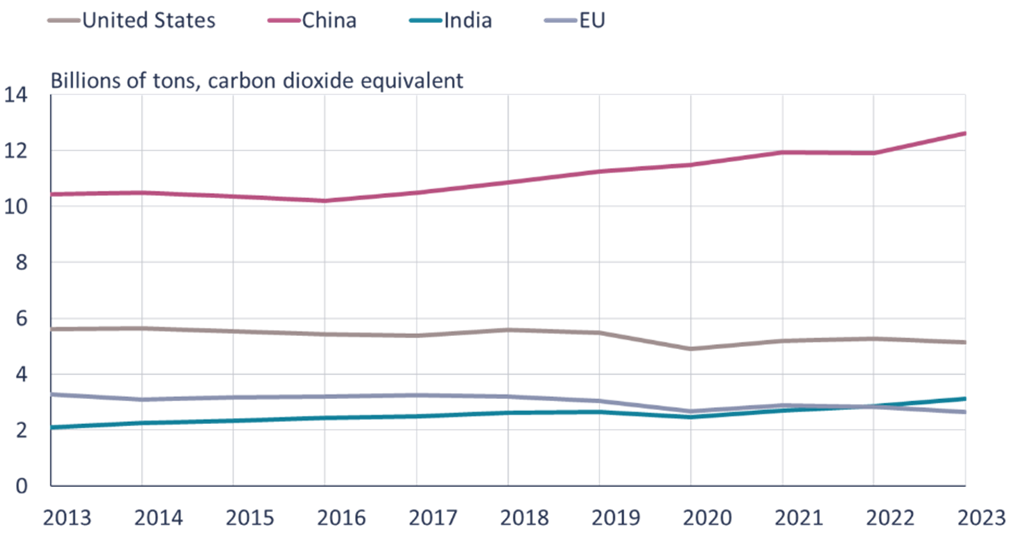BOFIT Weekly Review 32/2024
Coal remains China’s top energy source despite significant investments in renewable energy
China is by far the world’s largest emitter of carbon dioxide. Last year the country brought as many new coal-fired power plants on line as the rest of the world. On the other hand, the country has also been boosting its emphasis on transitioning to renewable energy sources. The government has targeted numerous support measures promoting clean energy and currently leads the world in investments in renewable energy. Chinese emission policy has two goals: hitting peak emissions before 2030 and carbon neutrality by 2060. According to statements from the third plenary session of the Central Committee in July and subsequent planning documents, the green transition and emissions reduction remain high on the party agenda.
A recent International Energy Agency (IEA) report on energy investment finds that China has moved significantly in building out its renewable energy capacity, accounting for about a third of all global investment in clean energy last year. For example, the volume of new solar panels installed in China last year was equivalent to the entire volume of new solar panels installed globally in 2022. According to the IEA, nearly 70 % more wind farms were built in 2023 than the previous year and 2023 was the fifth year in a row that China’s use of nuclear energy exceeded that of any other country. China this year already hit its goal of increasing wind and solar capacity to 1.2 terawatts, a target deadline originally set for 2030.
Production of British Petroleum’s (BP) long-running annual global energy assessment has been transferred to the Energy Institute (EI). EI Statistical Review, released in early July, covers aspects of global energy production, consumption, and trade. The document states that China’s consumption of renewable energy grew by about 8 % y-o-y in 2023 and that China accounted for roughly 31 % of global renewable energy consumption last year.
Despite the investment in renewable energy, China’s massive carbon footprint remains problematic. The EI Statistical Review notes that China’s energy consumption grew last year by about 7 % and that China accounted for about 32 % of carbon emissions globally. China continues to invest in fossil fuels, particularly coal. Of China’s entire energy consumption last year (171 exajoules), 92 exajoules came from burning coal – an increase of about 5 % from the previous year. China also relied much more on oil (32 exajoules) than renewable energy (16 exajoules) to satisfy its energy needs. With low global prices relative to prices of domestic coal, China’s coal imports boomed last year, accounting for about a third of total global coal imports.
According to the Centre for Research on Energy and Clean Air (CREA), China’s steel industry, which produces more than half of the world’s steel, plays a significant role in reducing emissions. China plans to reduce the carbon emissions of its steel industry by 53 million metric tons (CO2 equivalent) in 2024–2025 from the 2023 level. China has yet to grant a single licence to build a coal-fired steel mill this year.
China is the world’s largest carbon dioxide emitter
Sources: The Energy Institute and BOFIT.